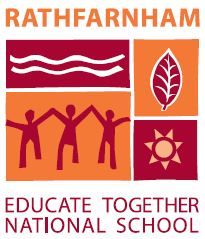One day a few weeks ago I slipped into the Senior Infant classroom where SI and 5th class were just finished their buddy reading. Not one child heard or saw me come in. How is that possible, you may ask? It is possible because every child in the room had their eyes closed and was practising mindfulness, as a calming end to their reading activity. To see the concentration on their faces and their total involvement in the process was amazing, and a certain example of the power of Mindfulness for children.
Mindfulness is becoming a very highly recommended practice for children. There are courses for teachers throughout the year on how to develop the practice with children and it has been recommended on more than one occasion by our school psychologist for use with children with anxiety problems. There are children’s CDs available, which encourage mindfulness, relaxation and confidence through introducing children to awareness of the breath, the body, thoughts and emotions through visualisation, affirmation and breathing techniques. Mindfulness for schools is associated with the SPHE programme, specifically the strands of Myself and Self-Identity. It is claimed that mindfulness practice has been shown to enhance physical, mental and emotional wellbeing and improve concentration. Many teachers claim that boys, in particular, really enjoy the mindfulness techniques.
Mindfulness is often described as ‘being present’. Being present in the moment means that we are more focused and aware. Being present to another person is often the best gift we can give. Once we become aware of what mindfulness is, it can be a simple technique that only takes a second. Some classroom activities promoted at the teacher training on mindfulness include asking children to take out their copies mindfully, write mindfully or sit mindfully. In this way they are more fully present to the activity and therefore more focused and able to learn. A mindfulness posture can set the scene for listening; being ‘alert yet relaxed’. Children in Senior Infants and Fifth Class were focusing on their breathing. Focus on breathing and body awareness is an integral part of mindfulness, again helping us become more aware, more present.
Mindfulness can be used for all kinds of situations and with different intentions. Children can be asked to take a silent moment to listen to the sounds around them, they can be asked to become aware of the pictures and personal stories in their mind, focusing on times when they were resourceful, confident or pleased with themselves. They can then re-create this in the present. When a child is anxious, stressed or ‘in a bad place’ they can be asked to become aware of it and then think of a favourite piece of music, let it play in the mind, and see how they feel afterwards. Visualisations can help children to let go of stressful thoughts or experiences, or they can write their stressors out, crumple them up and dump them. Children can go on mindfulness walks, being aware of what they experience through their senses as they walk.
In this world of fast moving images, technology based activities and a super quick pace of living, children need, more than ever, to stop and just be. They need someone to teach them the techniques of mindfulness so that they can learn to relax, take time for themselves and others and develop strategies to cope with stress. Mindfulness creates a space in the mind, a space where children learn to build inner resources for dealing with modern day life.
A good resource for parents to use with children is the curriculum friendly CD Still Space from Mindfulness Matters. It is a CD of five minute mindfulness and visualisation tracks for children to build resilience and compassion. Check out www.mindfulnessmatters.ie for more information and a range of Irish resources, podcasts, etc on the topic of Mindfulness.

Recent Comments